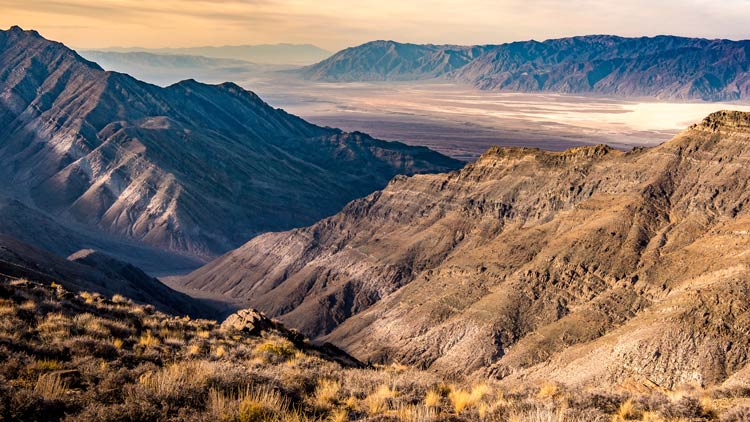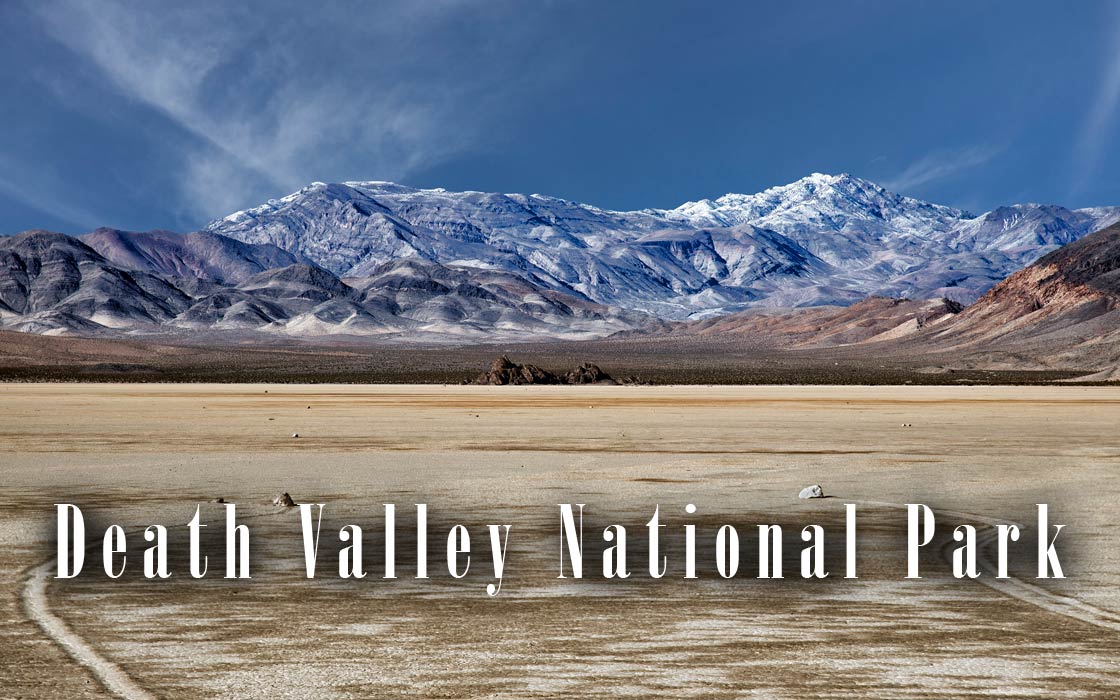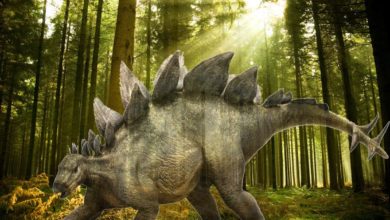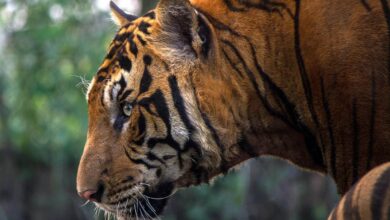Death Valley National Park – the hottest area in North America
Death Valley National Park is located in California and Nevada and is known for its vast deserts and extreme temperatures. It is the lowest, driest, and hottest area in North America, and features unique geological formations such as sand dunes, salt flats, and canyons. The park is also home to a diverse range of plant and animal life, including the iconic Joshua tree. Visitors to the park can explore its many hiking trails, scenic drives, and campgrounds, as well as visit the park’s visitor centers and museums to learn more about its history and natural features.
“Step into a world unlike any other, where searing heat and ethereal beauty collide to create a breathtaking landscape unlike anything you’ve ever seen. Discover Death Valley National Park, a place where towering peaks and sprawling valleys paint a canvas of geological wonders and unparalleled natural beauty.”
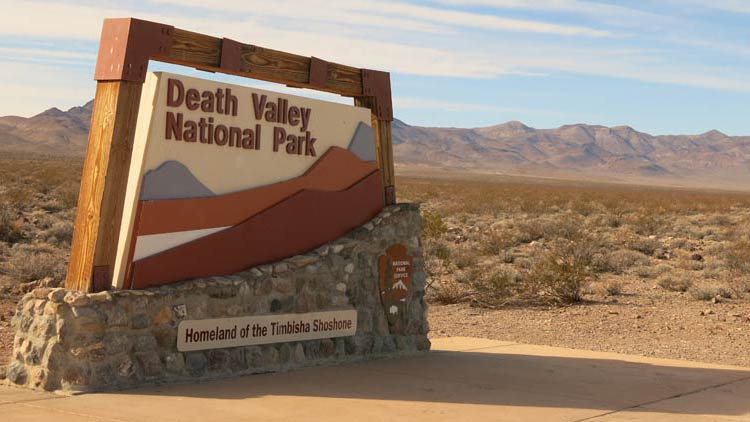
Location
Death Valley National Park is located primarily in the eastern part of California, with a small portion extending into Nevada. It is situated about 140 miles (225 km) northwest of Las Vegas and about 280 miles (450 km) east of Los Angeles. The park covers an area of about 3.4 million acres and is easily accessible by car via several major highways, including Route 190 and Route 178.
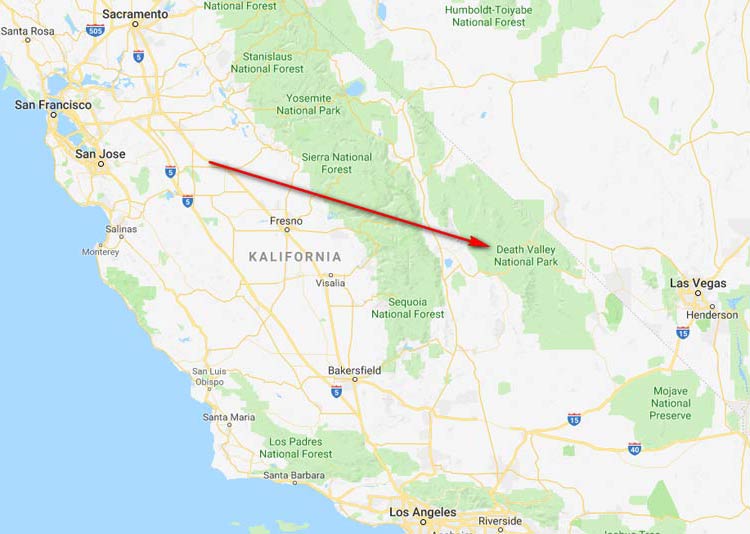
Basic Facts About Death Valley National Park
- Location
Death Valley National Park is located in the southern part of California, near the Nevada border. - Size
The park covers an area of over 3 million acres (13,000 km²), making it the largest national park in the lower 48 states. - Lowest point
The lowest point in the park is Badwater Basin, which is located 282 feet (86 meters) below sea level, the lowest point in North America. - Highest temperature
On July 10, 1913, Death Valley reached a high temperature of 134°F (56.7°C), which is the highest temperature ever recorded on Earth. - Flora and Fauna
Death Valley is home to a wide variety of plants and animals, including bighorn sheep, mountain lions, desert tortoises, and a wide variety of birds and insects. - Tourist attractions
Some of the main tourist attractions in Death Valley National Park include Badwater Basin, Zabriskie Point, Dante’s View, Scotty’s Castle, Artists Palette, Racetrack Playa, Furnace Creek Ranch. - Dark Sky Park
Death Valley National Park is recognized as an International Dark Sky Park, meaning it’s an ideal place for stargazing, with minimal light pollution.
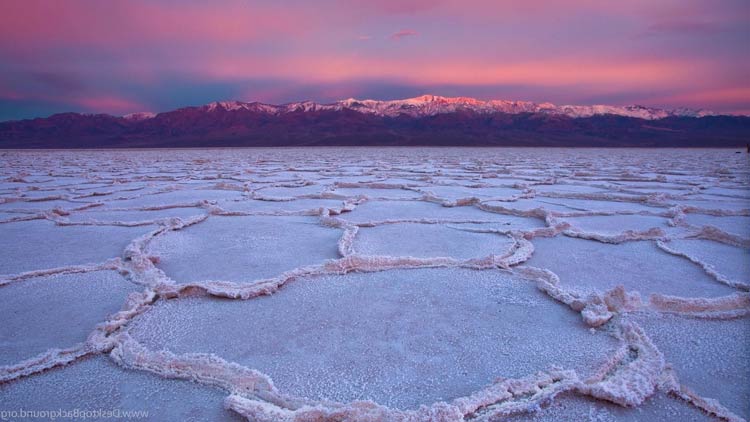
Name of the park
The name “Death Valley” was given by a group of pioneers who became stranded in the valley in the winter of 1849-1850. They suffered from extreme heat, lack of water, and hostile conditions, and many of them died. The name “Death Valley” is a reference to the difficult conditions they faced and the high number of deaths that occurred during their journey. The name has since been adopted as the official name of the valley and the park.
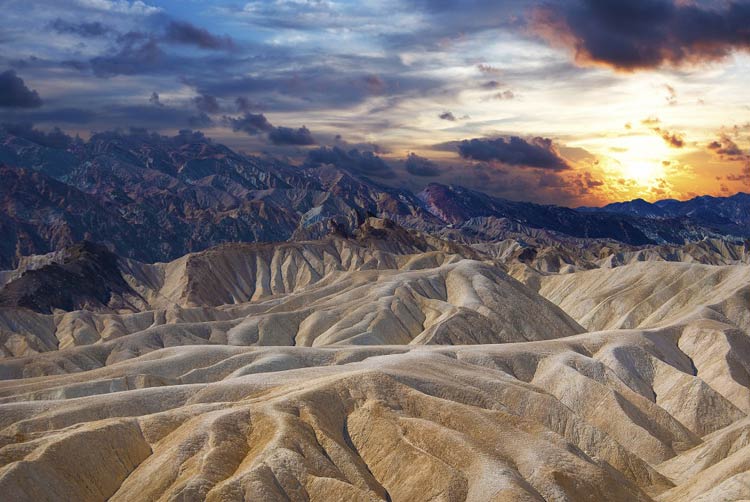
Geography
Death Valley National Park is known for its vast deserts and unique geological formations. The park is situated in a desert basin and is the lowest point in North America, with Badwater Basin reaching 282 feet (86 m) below sea level. The park is home to a wide range of landscapes, from towering sand dunes to rocky canyons, and from salt flats to mountains. The park’s geography is also characterized by its extreme temperatures, with summer temperatures often reaching above 120°F (49°C).
The park’s geology is also unique, with a variety of rock formations such as the Furnace Creek Formation, the oldest exposed rock in the park, and the Artist Drive Formation, a colorful hillside of layered rocks. The park is also home to several volcanic features, like the Ubehebe Crater, a large volcanic crater that is 600 feet (183 m) deep.
The park is also home to a diverse array of plant and animal life, including the iconic Joshua tree, which is found in the higher elevations of the park, and the Desert Tortoise.
The park also offers a range of activities for visitors, from hiking and camping to scenic drives and ranger-led tours, allowing visitors to explore the park’s diverse geography and geology.

Features of the park
Death Valley National Park is home to many unique and interesting features, including:
- Badwater Basin
The lowest point in the park and in North America is located at 282 feet (86 meters) below sea level. - Zabriskie Point
A viewpoint overlooking a colorful badlands landscape made of sedimentary rocks. - Dante’s View
A viewpoint that offers panoramic views of the valley, including Badwater Basin, the Panamint Mountains, and the Funeral Mountains. - Scotty’s Castle
A historic villa located in the northern part of the park, built in the 1920s by a wealthy businessman and his friend, a con man claiming to be “Death Valley Scotty.” - Artists Palette
A colorful area of the park with hillsides made of layered rock that are rich in minerals, creates a unique and colorful landscape. - Racetrack Playa
A dry lakebed is known for its mysterious moving rocks, which appear to have left trails in the mud as they have shifted across the surface. - Furnace Creek Ranch
A resort located in the heart of the park, offering visitors a range of amenities, including a golf course, hotel, restaurant, and swimming pool. - The Sand Dunes
Large fields of sand dunes, some of which reach heights of up to 600 feet (183 meters). - The Salt Flats
Extensive areas of salt flats, including the Devil’s Golf Course, a salt pan with jagged salt formations. - The Wildflowers
During the spring, the park is home to an abundance of wildflowers, including the desert gold poppy and the evening primrose.
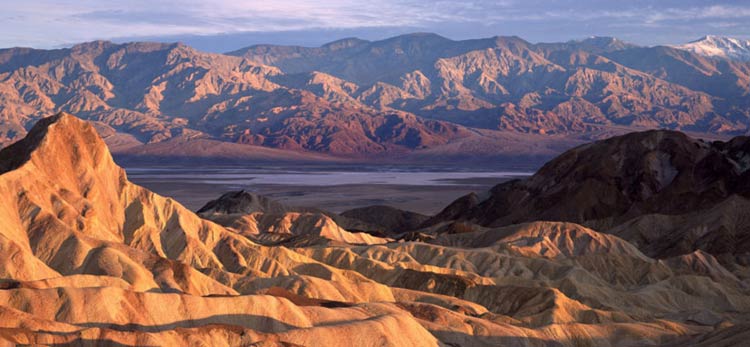
Mineral deposits
Death Valley National Park contains a number of valuable mineral deposits, including borax, gold, silver, and lead. The discovery of borax in the 1880s led to the development of the borax mining industry in the region, which was a major source of employment for many years. In the early 20th century, gold and silver mining became an important industry in the park, and several mines were established in the area. Today, mining is no longer a major activity in the park, but some minerals are still extracted from the area, primarily for use in the production of chemicals and other industrial products.
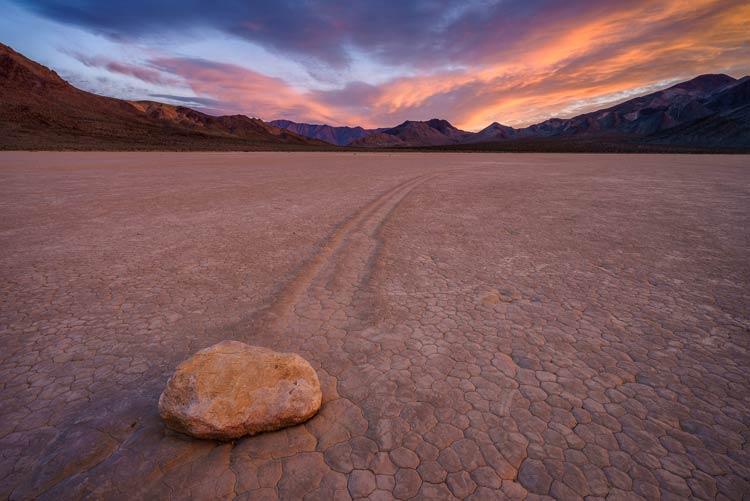
Climate
The climate in Death Valley National Park is characterized by its extreme heat and aridity. The park is located in a desert basin and is the lowest point in North America, which means that it receives very little rainfall and has extremely high temperatures.
- Summer temperatures in Death Valley can reach above 120°F (49°C) and can stay above 100°F (38°C) for several months. The record high temperature in Death Valley was 134°F (56.7°C) which was recorded on July 10, 1913. This is the highest temperature ever recorded on Earth.
- Winters are milder, but still very dry, with daytime temperatures averaging in the mid-60s to low 70s Fahrenheit (around 20-25 Celsius).
Due to the extreme temperatures, the best time to visit Death Valley National Park is during the cooler months of the year, from November to April, when temperatures are more moderate and hiking and other activities are more comfortable.
The park receives very little rainfall, with an average of fewer than 2 inches (50 mm) of precipitation per year. Most of the rain falls during the winter months, and it is not uncommon for the park to go for several years without any significant rainfall.
It’s important to plan ahead and take the necessary precautions when visiting the park during the summer months, such as carrying plenty of water, wearing appropriate clothing and using sunscreen.
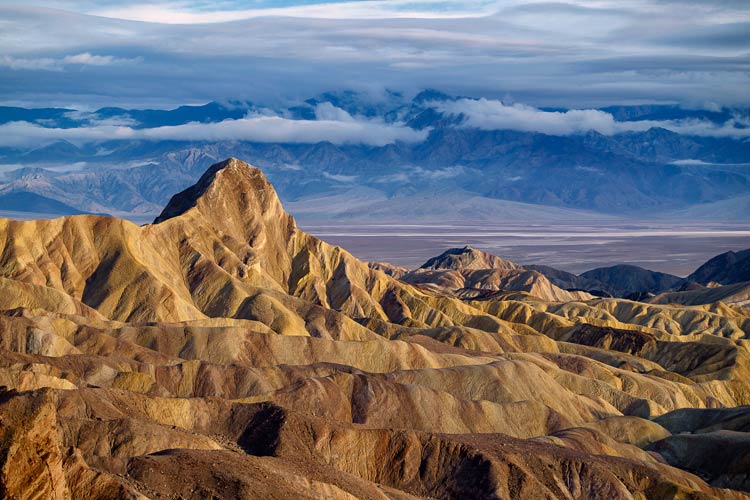
History and name of the Park
Death Valley National Park has a long and varied history. The area has been inhabited by various indigenous peoples for thousands of years, and there are many petroglyphs and other cultural artifacts that can be found throughout the park.
The name “Death Valley” was given to the area by a group of pioneers who became lost in the valley in the winter of 1849-1850. They struggled to find food and water, and many of them died. The survivors gave the valley its ominous name when they finally emerged from the valley.
The park was established as a national monument in 1933 and was later designated as a national park in 1994. The park has a rich mining history, and the remnants of old mining towns, such as Rhyolite, can be found within the park.
The park is home to a number of historic sites, including the Harmony Borax Works, where borax was mined and processed in the late 1800s, and the Furnace Creek Ranch, which was once a working ranch and is now a hotel and visitor center.
Throughout the years, the park has been used for scientific research and education, as well as for recreation. Today, Death Valley National Park is a popular destination for hikers, campers, and nature enthusiasts, who come to explore the park’s unique landscapes and diverse wildlife.
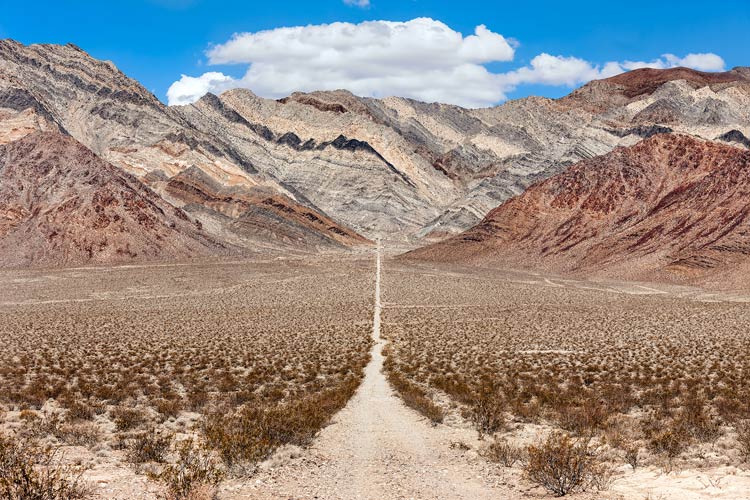
Geologic history
Death Valley National Park has a unique and complex geologic history. The park’s geology is characterized by a variety of rock formations, including the Furnace Creek Formation, which is the oldest exposed rock in the park and dates back to the Precambrian Era.
The park’s geologic history can be divided into several distinct periods. The first period is the Precambrian, which lasted from about 4 billion to 540 million years ago. During this time, the area that is now Death Valley was covered by a shallow sea and the Furnace Creek Formation was formed from sedimentary rocks.
The second period is the Paleozoic Era, which lasted from about 540 to 248 million years ago. During this time, the area experienced uplift and erosion, leading to the formation of the Panamint Range and other mountain ranges in the park.
The third period is the Mesozoic Era, which lasted from about 248 to 65 million years ago. During this time, the area was covered by a shallow sea and volcanic activity formed the Ubehebe Crater and other volcanic features in the park.
The fourth period is the Cenozoic Era, which lasted from about 65 million years ago to the present. During this time, the area experienced more uplift and erosion, leading to the formation of the current landscape of the park, including sand dunes, salt flats, and canyons.
The park also contains a few unique features like the Racetrack Playa, where large rocks move across the dry lakebed leaving visible tracks and the cause of the movement is not fully understood. The park’s geologic history is still being studied by scientists and researchers, and new discoveries are still being made.
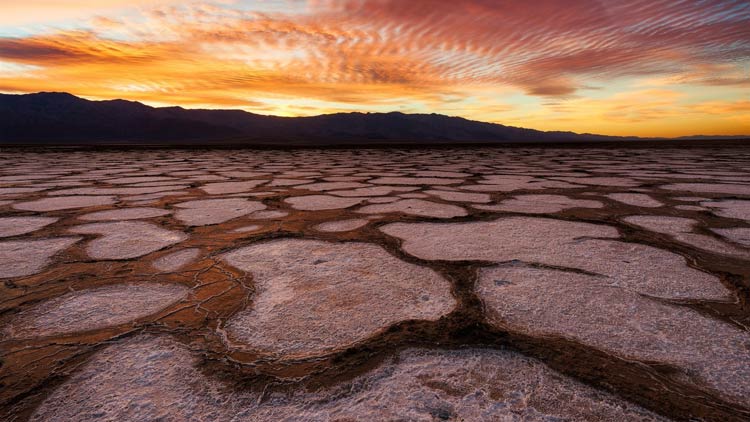
Flora in Death Valley National Park
Death Valley National Park is home to a diverse array of plant life, despite its harsh desert climate. The park’s plants have adapted to survive in the extreme heat and aridity of the desert, and they are able to store water and survive long periods of drought.
The park is divided into several different plant communities, each with its own unique flora. The lower elevations of the park, below 2,000 feet (610 meters), are dominated by creosote bush, Joshua tree, and other desert shrubs. These plants are able to survive the extreme heat and aridity of the desert by using deep roots to tap into underground water sources.
Above 2,000 feet (610 meters), the park’s plant communities transition to pinyon-juniper woodlands, which are characterized by the presence of pinyon pine and juniper trees. These trees are able to survive in the park’s cooler and moister climate by using a variety of water-conserving strategies, such as shedding their leaves in the summer to reduce water loss.
The park also contains a few riparian habitats, along with the Amargosa river and a few other places where you can find Cottonwood, willows, and other plants that thrive in the presence of water.
At higher elevations, above 6,000 feet (1,830 meters), the park’s plant communities transition to subalpine and alpine habitats, where you can find limber pine, bristlecone pine, and other high-elevation plants. These plants are able to survive in the park’s harsh alpine climate by using a variety of water-conserving strategies, such as deep roots and small leaves.
Overall, the park is home to more than 1000 species of plants, many of which are unique to the region, and it’s a great place for botanical enthusiasts to explore.

Fauna in Death Valley National Park
Death Valley National Park is home to a diverse array of wildlife, despite its harsh desert climate. The park’s animals have adapted to survive in the extreme heat and aridity of the desert, and they are able to store water and survive long periods of drought.
The park is home to a variety of mammals, including bighorn sheep, mountain lions, bobcats, and coyotes. These animals are able to survive in the desert by using a variety of strategies, such as foraging for food at night to avoid the heat of the day, and staying close to water sources.
The park is also home to a variety of reptiles, including desert tortoises, rattlesnakes, and Gila monsters. These animals are able to survive in the desert by using a variety of strategies, such as burrowing underground to escape the heat, and storing water in their bodies.
The park also has a variety of birds, including golden eagles, roadrunners, and a wide variety of desert sparrows, finches, and other small birds. These animals are able to survive in the desert by using a variety of strategies, such as foraging for food during the cool hours of the day, and staying close to water sources.
The park also has a variety of insects, including the famous Death Valley beetles which can survive in extreme conditions, and are able to store water and survive long periods of drought.
Overall, Death Valley National Park is a great place to explore the diversity of desert wildlife and learn about the unique strategies that these animals use to survive in this harsh environment.
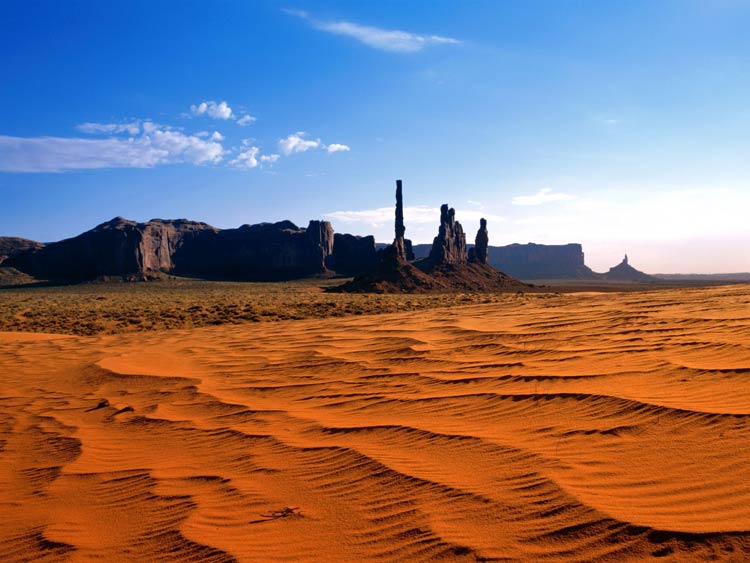
Tourism and tourist attractions in the park
Death Valley National Park is a popular tourist destination, known for its unique and dramatic landscape, as well as its rich history and cultural significance. The park offers a wide variety of activities for visitors, including hiking, camping, sightseeing, and wildlife watching.
Some of the main tourist attractions in the park include:
- Badwater Basin
This is the lowest point in North America, at 282 feet (86 meters) below sea level, and offers a unique perspective on the park’s landscape. Visitors can walk out on the salt flats and see the vast expanse of the basin. - Zabriskie Point
This viewpoint offers a spectacular panorama of the park’s rugged mountains and canyons, and is a popular spot for sunset and sunrise views. - Dante’s View
This viewpoint offers a panoramic view of the park from 5,475 feet (1,668 meters) above sea level, and is a great place to see the park’s landscape from a different perspective. - Scotty’s Castle
This historic building is a former ranch and home, built in the 1920s, and offers tours of the castle, its grounds and its history. - Artists Palette
A colorful area of the park, with a variety of rocks that have been formed by the iron and manganese deposits, creates a colorful palette of reds, greens, and purples. - Racetrack Playa
A dried lakebed with large rocks that move across it, leaving visible tracks. The cause of the movement is not fully understood, but it’s one of the unique and fascinating features of the park. - Furnace Creek Ranch
This is a historic ranch and resort, located in the heart of the park, offering a variety of activities such as golfing, swimming, and tennis.
Death Valley National Park is a great place to explore the unique landscapes and natural beauty of the desert, and to learn about the park’s rich history and cultural significance.

How To Reach To Death Valley National Park?
Death Valley National Park can be reached by car, plane, or bus.
- By Car
Death Valley National Park is located in eastern California and can be reached by driving on highways 190, 127, or 178. The park is approximately a 2.5-hour drive from Las Vegas, Nevada, and a 4-hour drive from Los Angeles, California. - By Plane
The nearest major airport is McCarran International Airport in Las Vegas, Nevada. From there, visitors can rent a car and drive to the park. - By Bus
There are several tour companies that offer bus trips to Death Valley National Park from Las Vegas and other nearby cities. These tours typically include transportation, park admission, and guided tours of the park’s most popular attractions.
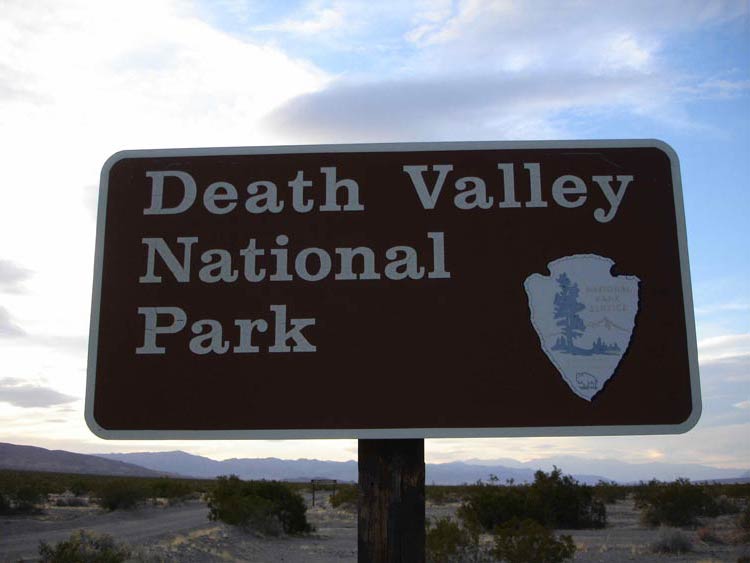
Best Time To Visit Death Valley National Park
The best time to visit Death Valley National Park depends on the type of activities and attractions you are interested in.
- Winter
Winter is the best time to visit if you are interested in scenic drives and outdoor activities such as hiking. Temperatures during the day are usually mild, with nighttime temperatures that can be cool. - Spring
Spring is the best time to visit if you are interested in wildflowers, as the park is home to an abundance of wildflowers, including the desert gold poppy and the evening primrose. - Summer
Summer is the hottest time of the year in Death Valley, with daytime temperatures that can reach well over 100°F (38°C). Visitors are advised to be cautious when traveling in the park during the summer, as the extreme heat can be dangerous. - Fall
Fall is a good time to visit if you are interested in scenic drives and outdoor activities, as temperatures are generally mild and pleasant.
Regardless of when you visit, it is always a good idea to be prepared for the conditions and bring plenty of water, as the park is known for its extreme heat and arid conditions.
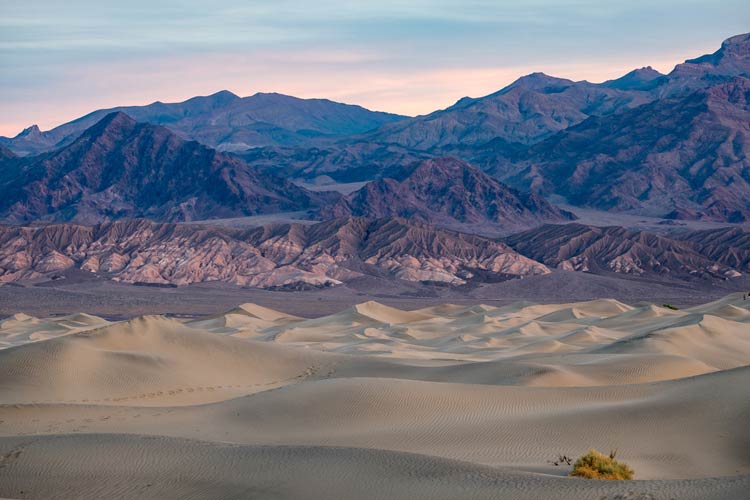
Death Valley National Park in numbers
- Area
3,408,395.63acres (13793.29 km2) - Elevation
The lowest point in the park, Badwater Basin, is located at an elevation of 282 feet (86 meters) below sea level. The highest point in the park, Telescope Peak, is located at an elevation of 11,049 feet (3,368 meters) above sea level. - Visitors
In 2021, the park saw 1,936,657 visitors. - Temperature
The highest recorded temperature in Death Valley was 134°F (56.7°C) on July 10, 1913, which is the highest temperature ever recorded in the world. - Length of Park Road
The park road network in Death Valley National Park covers approximately 140 miles (225 km). - Number of Campgrounds
The park has 9 campgrounds with a total of 558 campsites. - Hiking Trails
There are over 100 miles (160 km) of hiking trails in the park, offering visitors opportunities to explore the park’s diverse landscapes and geological formations. - Wildlife
The park is home to over 100 species of mammals, including bighorn sheep, coyotes, and mountain lions, as well as over 300 species of birds.
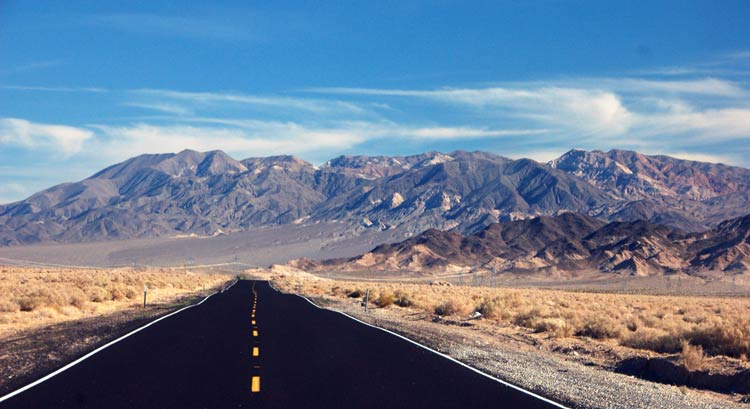
Interesting facts about Death Valley National Park
- Death Valley is the largest national park in the lower 48 states, at over 3 million acres.
- The park’s lowest point is Badwater Basin, which is 282 feet (86 meters) below sea level, making it the lowest point in North America.
- In 1913, Death Valley reached a high temperature of 134 degrees Fahrenheit (56.7 degrees Celsius) on July 10, 1913, which is the highest temperature ever recorded on Earth.
- Death Valley was formed by a combination of tectonic activity and erosion. The park’s unique landscape is the result of millions of years of erosion, which has carved canyons, mountains, and valleys into the earth.
- The park’s name, “Death Valley,” was given by a group of pioneers who became stranded in the valley in the winter of 1849-1850. They suffered from extreme heat, lack of water, and hostile conditions, and many of them died.
- Death Valley is home to a wide variety of plants and animals, including bighorn sheep, mountain lions, desert tortoises, and a wide variety of birds and insects.
- The park is also home to a variety of unique geological features, such as the Racetrack Playa, a dried lakebed with large rocks that move across it, leaving visible tracks. The cause of the movement is not fully understood, but it’s one of the unique and fascinating features of the park.
- The park has a rich history of mining, and many of the park’s visitors today come to explore the park’s abandoned mines and ghost towns.
- Death Valley National Park is also recognized as an International Dark Sky Park, meaning it’s an ideal place for stargazing, with minimal light pollution
- In the 1920s, the park was a popular spot for Hollywood producers and directors, who used the park’s unique landscapes as the backdrop for many western movies.

Q&A (questions and answers) about Death Valley National Park
Q: Where is Death Valley National Park located?
A: Death Valley National Park is located in the southern part of California, near the Nevada border.
Q: What is the main feature of Death Valley National Park?
A: The main feature of Death Valley National Park is its unique and dramatic landscape, including salt flats, sand dunes, mountains, and canyons.
Q: What is the lowest point in Death Valley National Park?
A: The lowest point in Death Valley National Park is Badwater Basin, at 282 feet (86 meters) below sea level, which is the lowest point in North America.
Q: What is the highest temperature ever recorded on Earth?
A: The highest temperature ever recorded on Earth was 134 degrees Fahrenheit (56.7 degrees Celsius) on July 10, 1913, in Death Valley.
Q: What is the history behind the name “Death Valley”?
A: The name “Death Valley” was given by a group of pioneers who became stranded in the valley in the winter of 1849-1850. They suffered from extreme heat, lack of water, and hostile conditions, and many of them died.
Q: What kind of plants and animals can be found in Death Valley National Park?
A: Death Valley National Park is home to a wide variety of plants and animals, including bighorn sheep, mountain lions, desert tortoises, and a wide variety of birds and insects.
Q: What are some of the main tourist attractions in Death Valley National Park?
A: Some of the main tourist attractions in Death Valley National Park include Badwater Basin, Zabriskie Point, Dante’s View, Scotty’s Castle, Artists Palette, Racetrack Playa, Furnace Creek Ranch.
Q: Is Death Valley National Park a good place for stargazing?
A: Yes, Death Valley National Park is recognized as an International Dark Sky Park, meaning it’s an ideal place for stargazing, with minimal light pollution
Q: What is the history of mining in Death Valley National Park?
A: Death Valley has a rich history of mining, and many of the park’s visitors today come to explore the park’s abandoned mines and ghost towns.
